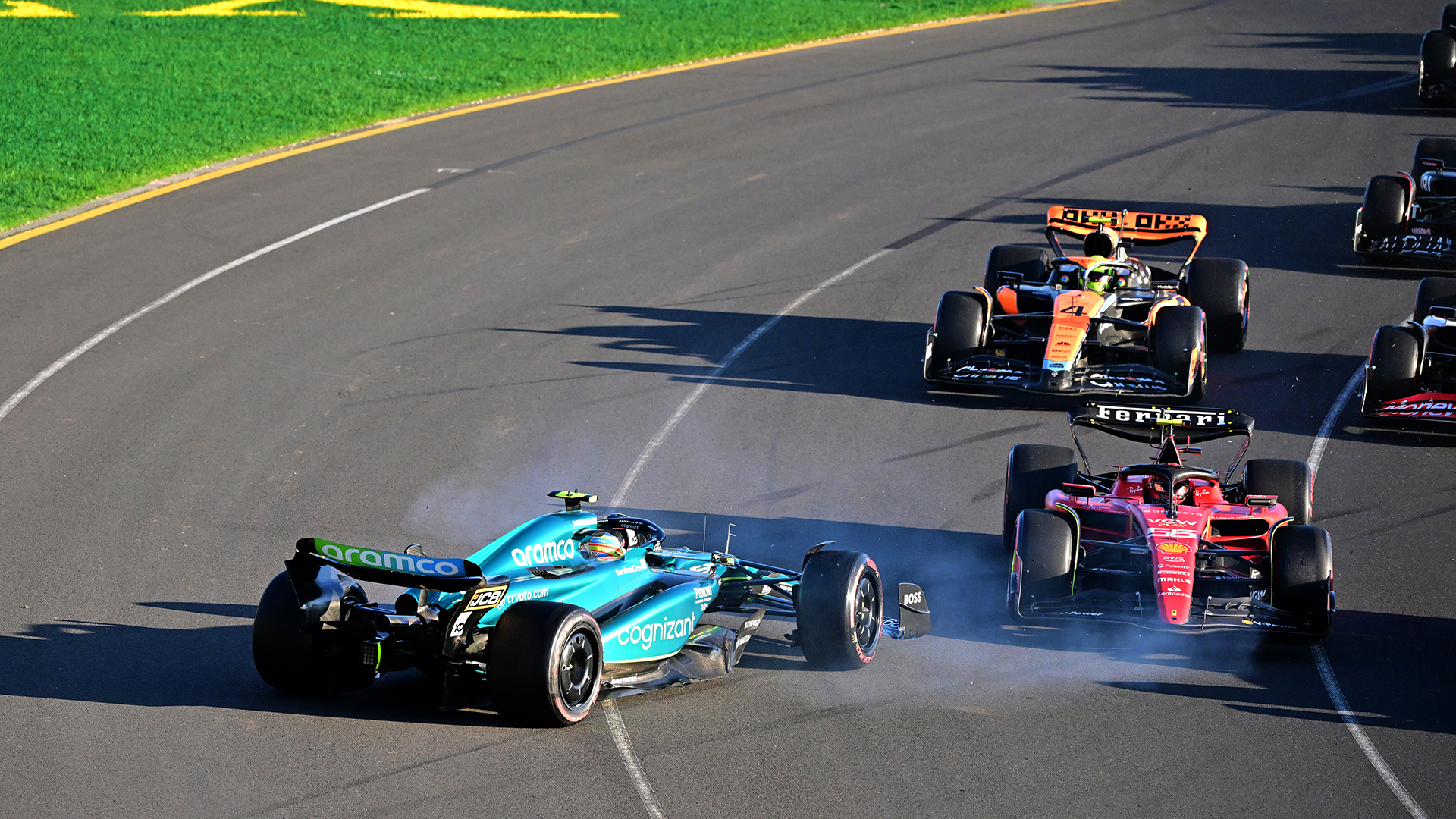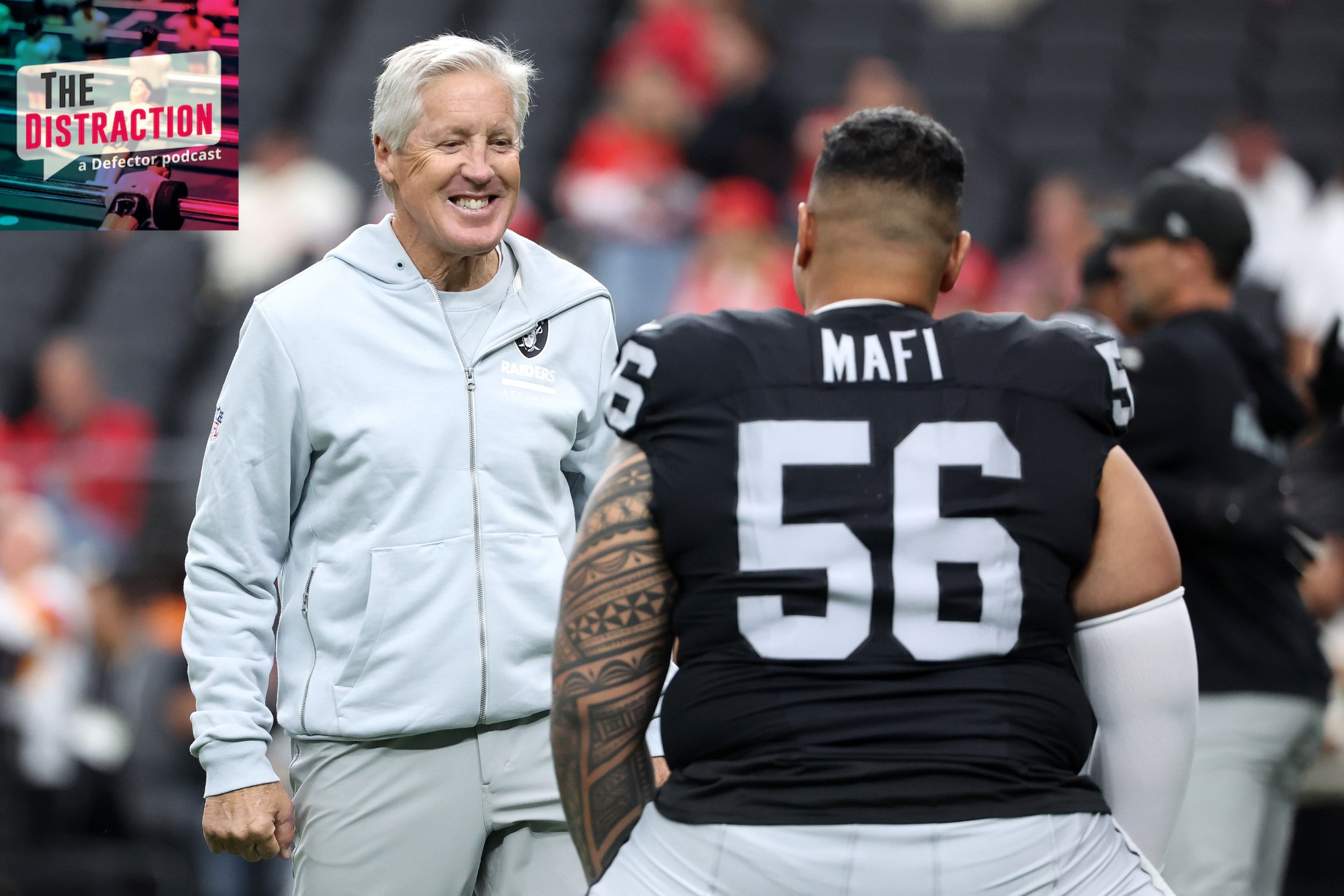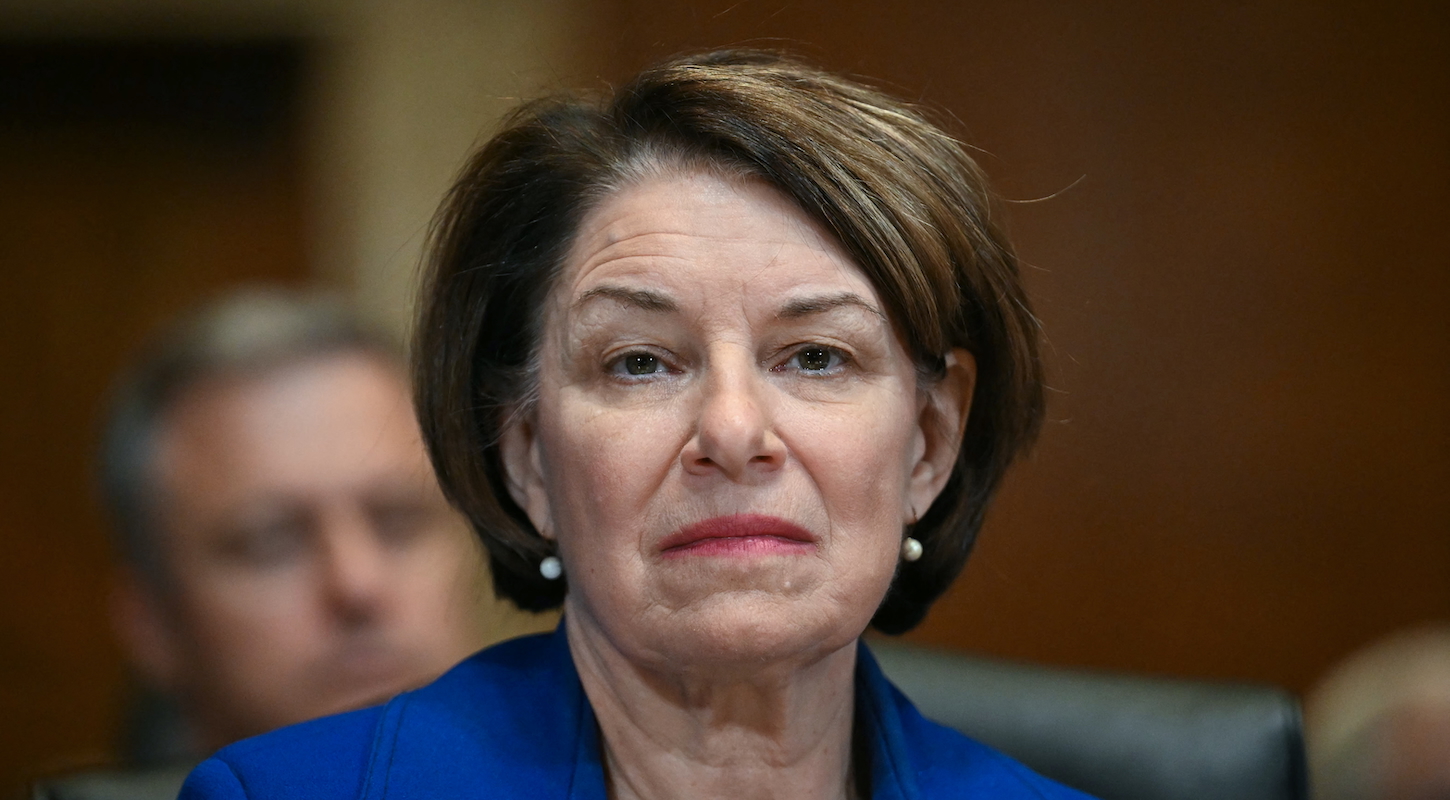A Formula One race consists of 20 drivers, all trying to do their best to finish as high as possible after 90 to 120 minutes of high-octane racing. Normally, the focus of a race is on the "as high as possible" part, but sometimes, a compounding set of disasters forces the drivers to focus on little else but the "finish" part of the deal. Though those types of races tend to be afflicted by some freakish and violent weather systems, the 2023 Australian Grand Prix was set upon by something even more unstoppable than a force of nature: the FIA decision-makers.
The FIA—short for the Fédération Internationale de l'Automobile, the auto racing governing body that rules over Formula One—has a rocky recent history with its own races, with its most high-profile moment of uncertainty coming at the end of the 2021 Abu Dhabi Grand Prix. The 2022 season had its own moments of nonsense, from the safety-car ending at the Italian Grand Prix to the confusion surrounding Max Verstappen's title win at the Japanese Grand Prix, but most of those issues cropped up after the season was well in hand. This time around, however, the FIA flubbed the early season ending in Melbourne by making a play for an exciting finish, only to see it blow up in their faces, much like George Russell's Mercedes.
Let's get the statistic out of the way first: The 2023 Australian Grand Prix is the first race in F1 history to have three red-flag stoppages. To stop a race under a red flag is to acknowledge that the conditions on the track are simply not safe enough for drivers to be out there, even behind a safety car. The first stoppage on Sunday came on lap seven, when Williams driver Alex Albon lost control of his car and smacked into the barrier:
The Hulkenberg onboard during Albon's crash 😳
— ESPN F1 (@ESPNF1) April 2, 2023
Incredible work from the Haas driver to avoid a collision 👏 pic.twitter.com/j18X0HKOTN
Thanks to some quick reflexes, Nico Hulkenberg was able to dodge Albon, whose car was shrouded in a cloud of gravel dust, and a safety car was immediately called upon to allow the marshals to clear the track of debris. However, it turned out that the barrier also needed repairs, which necessitated the red-flag stoppage, and so the drivers went back to the pits to wait for that to happen. This isn't a particularly egregious use of the red flag, though it wasn't immediately evident the barrier repair was the true reason for the stoppage.
The bigger problem for the FIA, and the race as a whole, came on lap 54. Haas driver Kevin Magnussen went a bit wide on turn two and smashed his back right tire into the barricade on the side of the track. Given both the amount of debris on the track, including a flying tire, as well as the damage done to the barrier, a safety car was immediately brought out. Since this was on lap 54 of 58, the logical conclusion, restated by the Sky Sports announce team, would be for the race to finish under the safety car while the marshals cleared the track. It would be a disappointing ending to the race, but that's just how F1 can go at times.
Or so I and everyone else thought! But the FIA hit the big red-flag button once more, ensuring that the race would not end under a safety car, but would instead force the drivers to come back out for another restart, this time with two laps of racing to go. At the time of the red flag, Max Verstappen was winning the race by something like 10 seconds over second-place Lewis Hamilton, and so he was understandably furious, while other drivers, like Fernando Alonso, were merely in a state of confusion.
After a long delay to get the track ready for racing once more the drivers returned to the track. The controversy was only just beginning: Almost immediately after the lap 57 restart, Ferrari's Carlos Sainz hit his countryman Alonso in the back, spinning out the Aston Martin driver who was in third place at the time of the restart. This caused a chain reaction down the grid, leading to Pierre Gasly and Esteban Ocon barreling into each other, Lance Stroll running off into the gravel, and Logan Sargeant quite inexplicably rear-ending Nyck de Vries.
This has got to be the most expensive restart in F1 history 💥 pic.twitter.com/f5dvZJrcLS
— ESPN F1 (@ESPNF1) April 2, 2023
It was a true comedy of errors, one that could have been completely avoided had the FIA simply ended the race under the safety car after Magnussen's crash. Instead, the record-breaking third red flag came out, sending the drivers back to the pits once more and causing a whole mess of confusion. The first sticking point was whether the race would be restarted at all; given F1 rules, the 57th lap had counted, thanks to the restart, and so there would only be one lap behind a safety car if the race were to restart, rendering that final lap a formality.
There was also the question of what order to use for any potential restart or finishing order, and this is where things got even more confusing. Under F1 rules, any potential restart order has to match the last time an order could be conclusively proven. Put plainly, this means that the order can be confirmed once every car passes one of the three sector markers on the track. In this particular race, most of the cars did in fact pass the sector one marker before the red flag came out, but not all.
This meant that the Alpines, which entered the restart in fifth and 10th, could not continue after their crash, adding two more cars to the list of DNFs, which finished at eight. Alonso had been sent down to 12th by the Sainz collision, when he had been in third at the time of the restart. If the race were to restart again with the same order, Alonso would have to go back to third, but then the question becomes whether the stewards hand Sainz a penalty for causing the collision, given that, in practical terms, that restart didn't count? This third stoppage was confusing for everyone involved, including the commentators, and for what felt like an eternity, no one had any idea how this race would end.
Finally, though, the rulings came down, and they weren't great. The race would in fact restart one more time, but behind the safety car, and using the previous restart's order. What's more is that Sainz would be given a five-second penalty for causing the collision on Alonso, which infuriated the Ferrari driver both at the time and well into the post-race scrum.
Raw emotions from Carlos Sainz 😩#AusGP #F1 pic.twitter.com/snsErM9nGA
— Formula 1 (@F1) April 2, 2023
It's easy to see why Sainz was so angry. The type of crash that he caused is usually forgiven by the FIA as a "first lap" incident; immediately after any form of standing start, the grid is bunched up, and accidents tend to happen. Hell, Sainz's teammate, the snakebitten Charles Leclerc, was knocked out of the race on the first lap thanks to a similar incident, as Stroll spun him out into the gravel on turn three; Stroll did not receive a penalty. On top of that, given the weirdness of the restart order, the crash and all the resulting carnage was ruled to not have officially happened anyway, so penalizing Sainz for it feels unfair, even if it's by the book (the idea behind penalties is to penalize the action, not the result).
That I can spend so many words describing what was in essence two laps of action is the main issue that afflicted the Australian Grand Prix. The FIA has two jobs that are in distinct opposition with each other, and that reality flared up at the worst possible time. The first job is to administer the race fairly and safely for all of the drivers and teams. The second job is to grow the sport of F1. When that second job wins out, the FIA will decide to make its rulings based on what will be more exciting, such as a one-lap shootout in Abu Dhabi two seasons ago, or a two-lap sprint in Melbourne this past weekend.
When those decisions backfire, it can feel like the governing body is just throwing shit at the wall to see what sticks, and no one leaves quite satisfied with the result. The Australian Grand Prix wasn't a great race by any means; there were too many stoppages and Verstappen's dominance made it a procession at the front. Perhaps that's why the FIA decided to try to inject some drama of its own after Magnussen's crash. Instead of a blistering finish, though, what it got was mass confusion, a lengthy period of time where no one had any idea what was happening, and a finish that left a sour taste in pretty much everyone's mouth.






